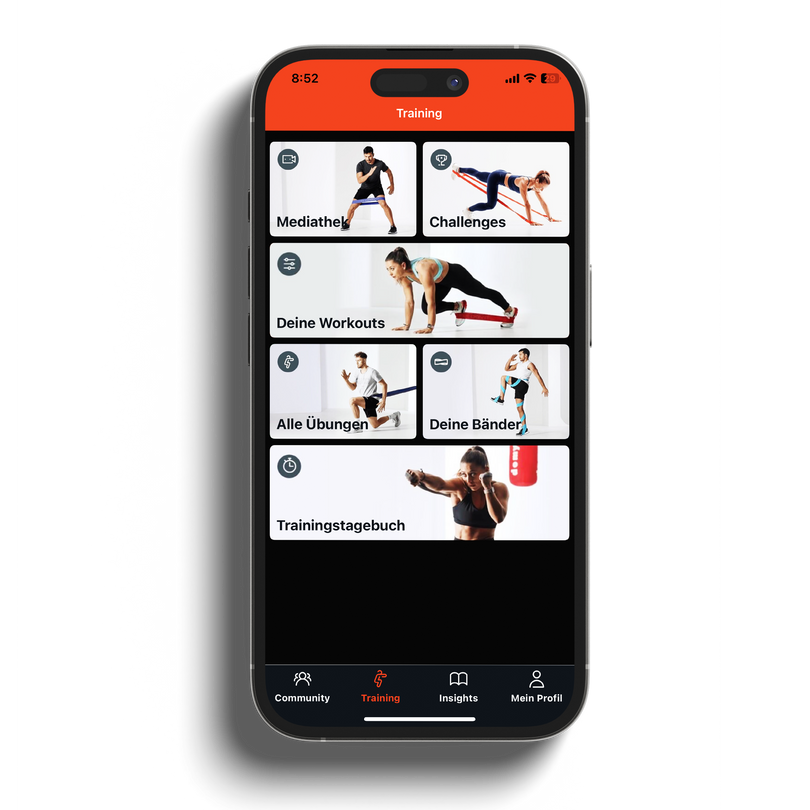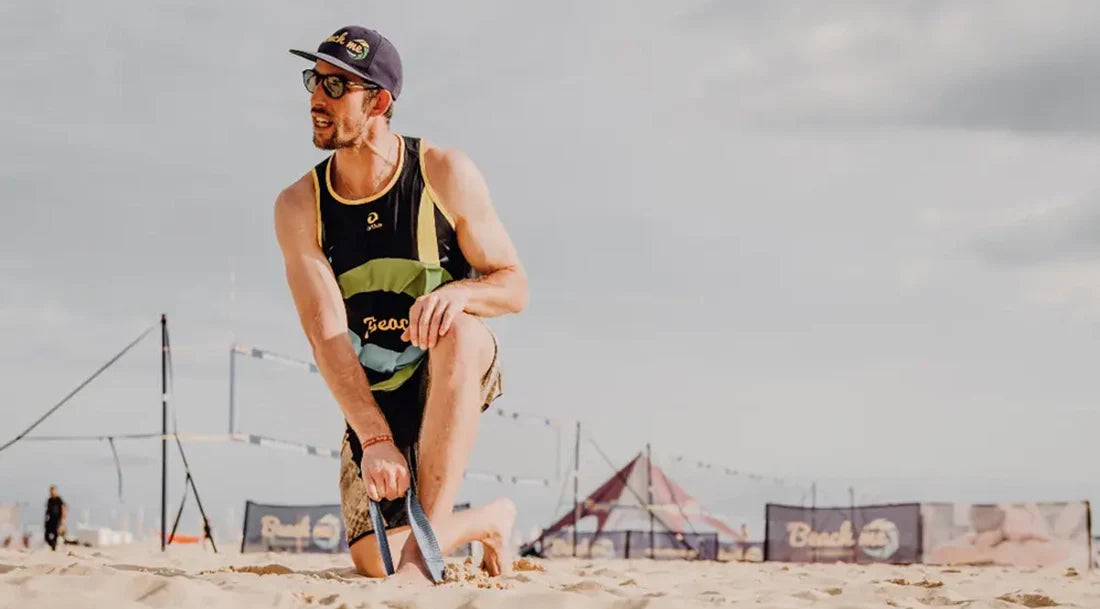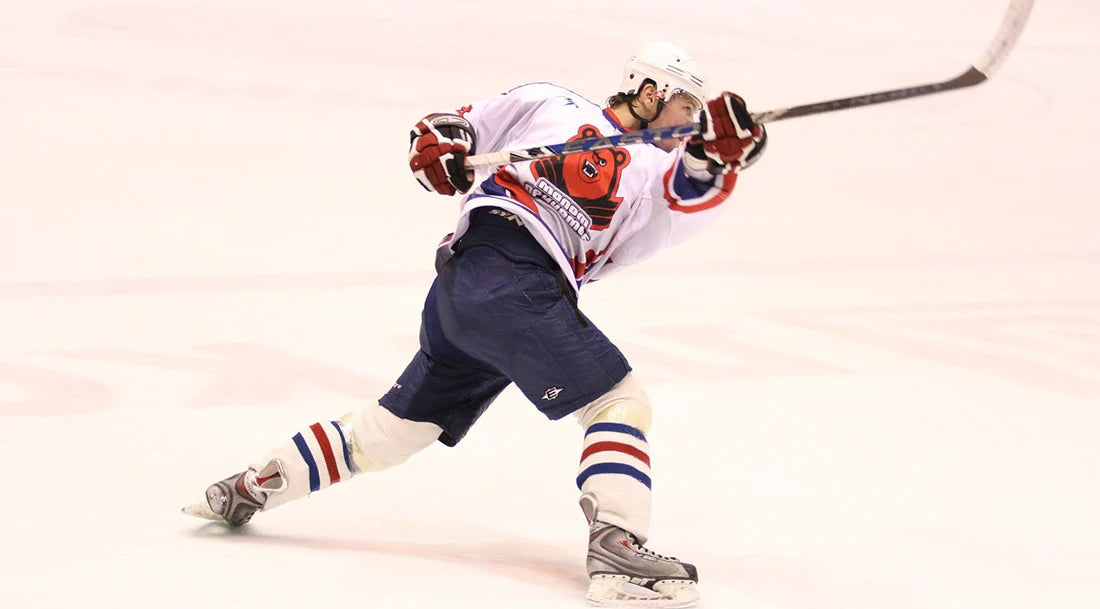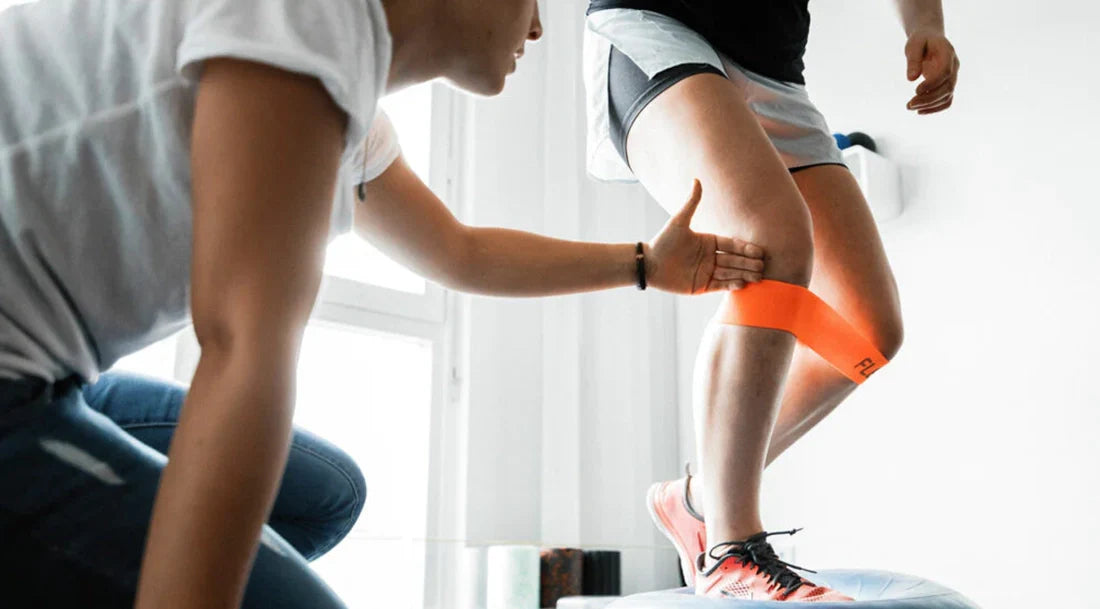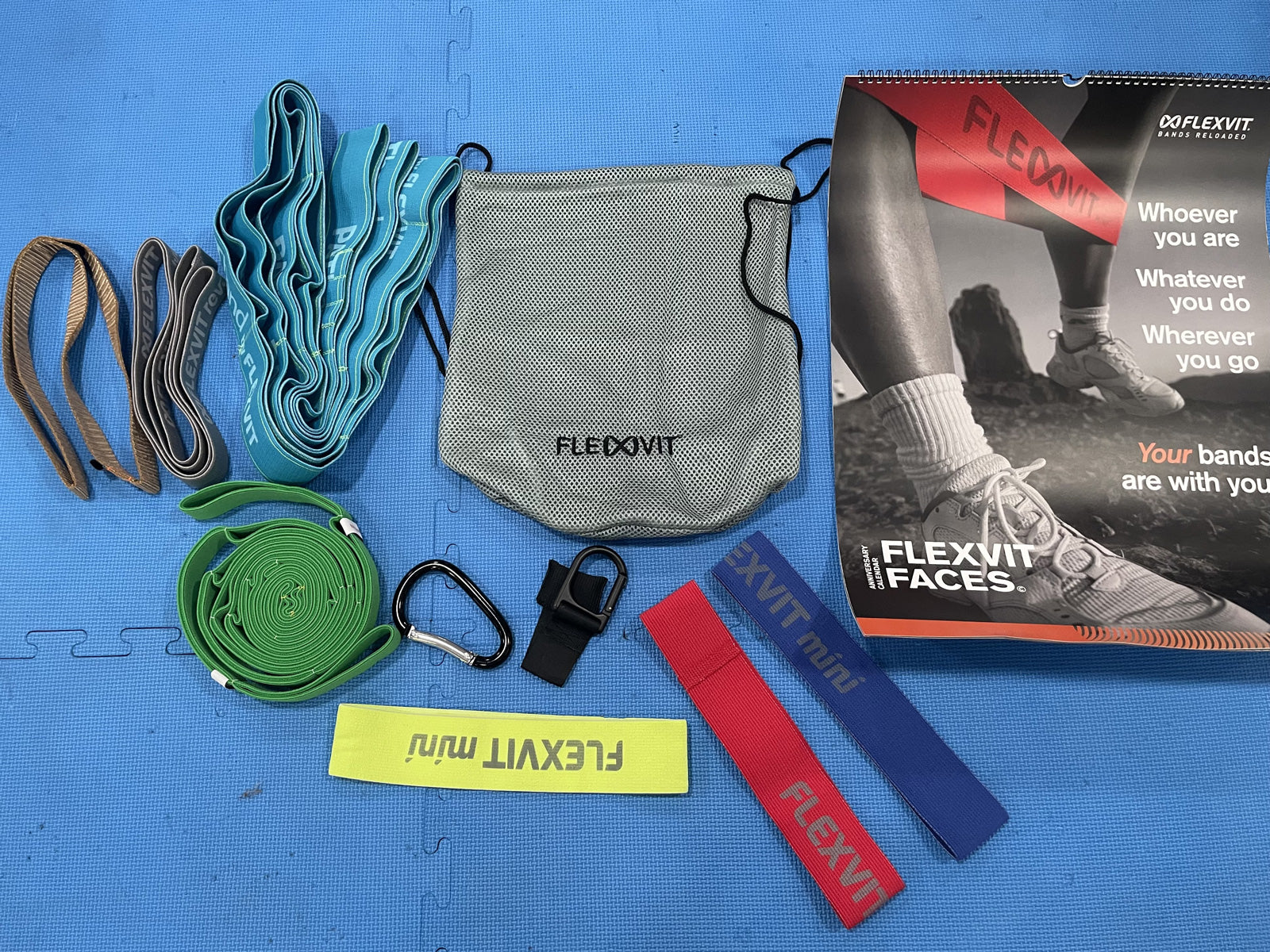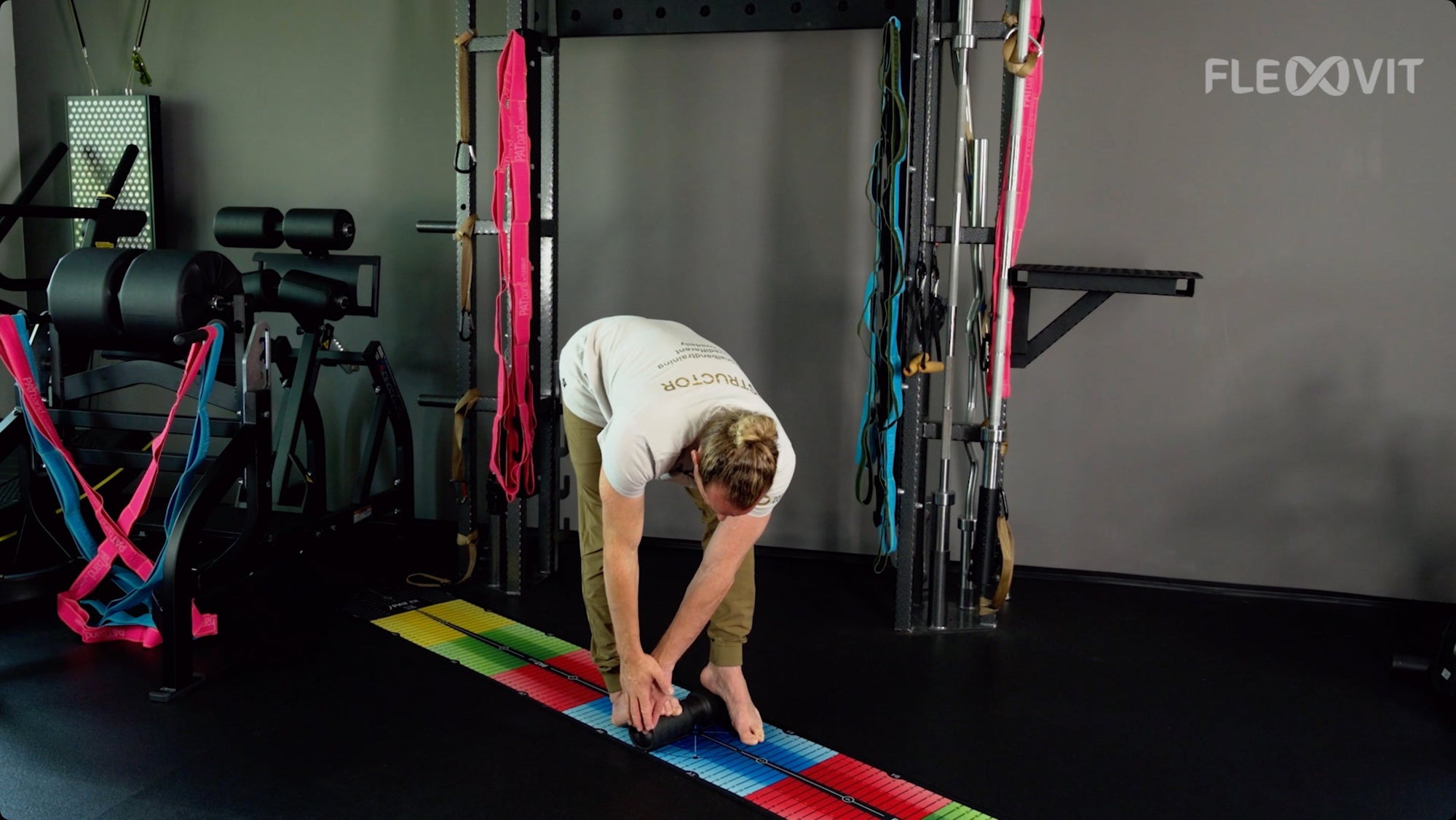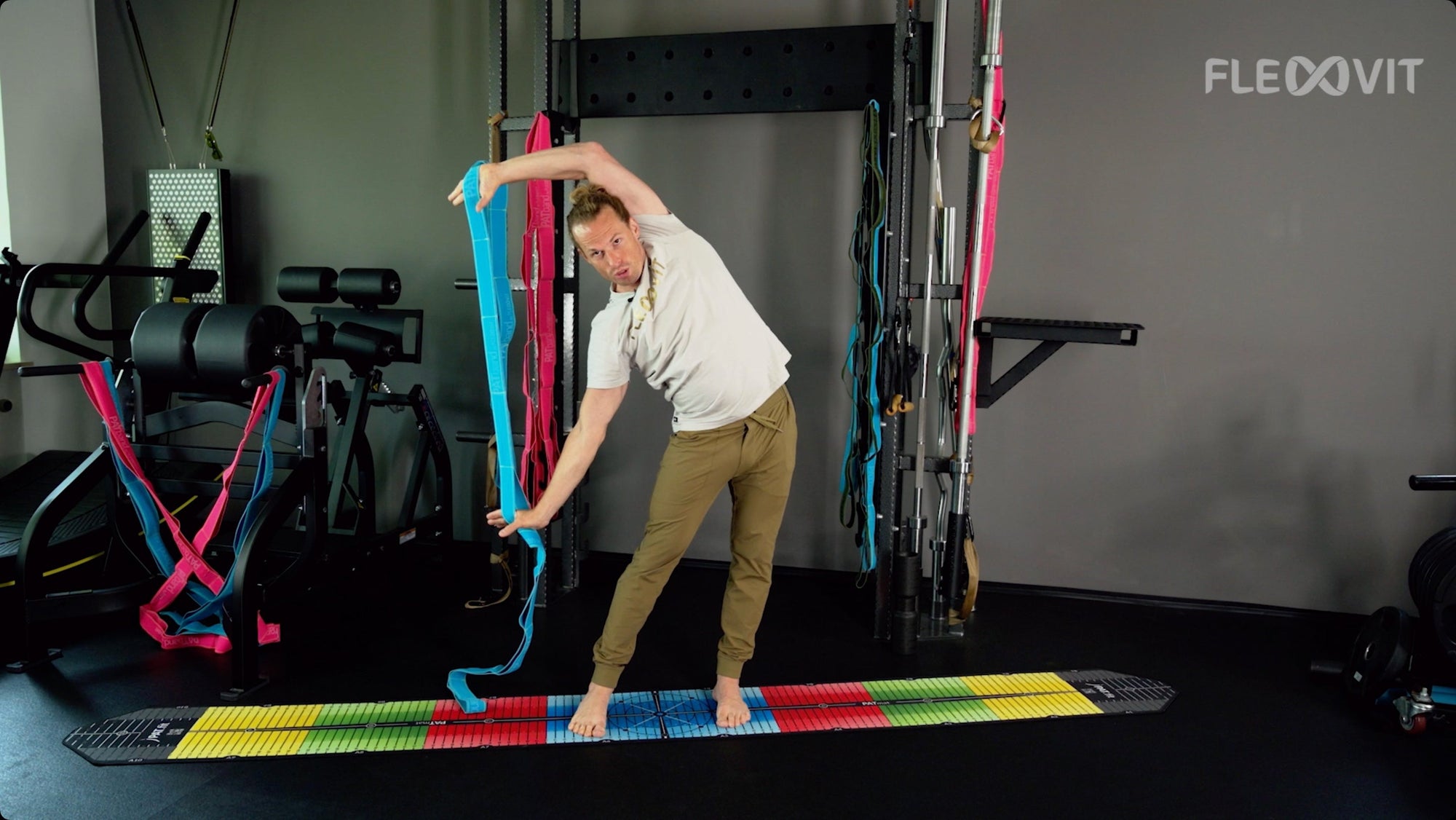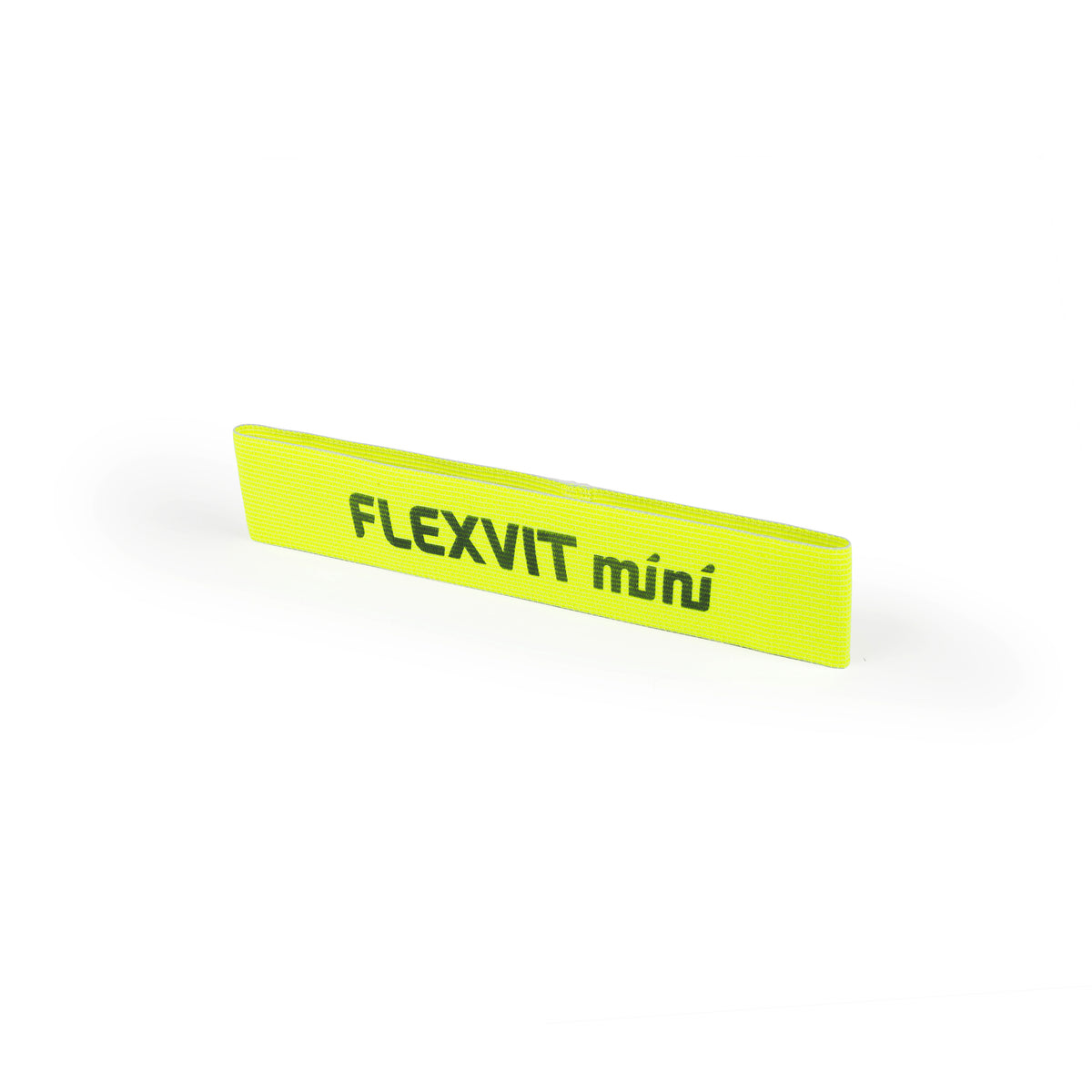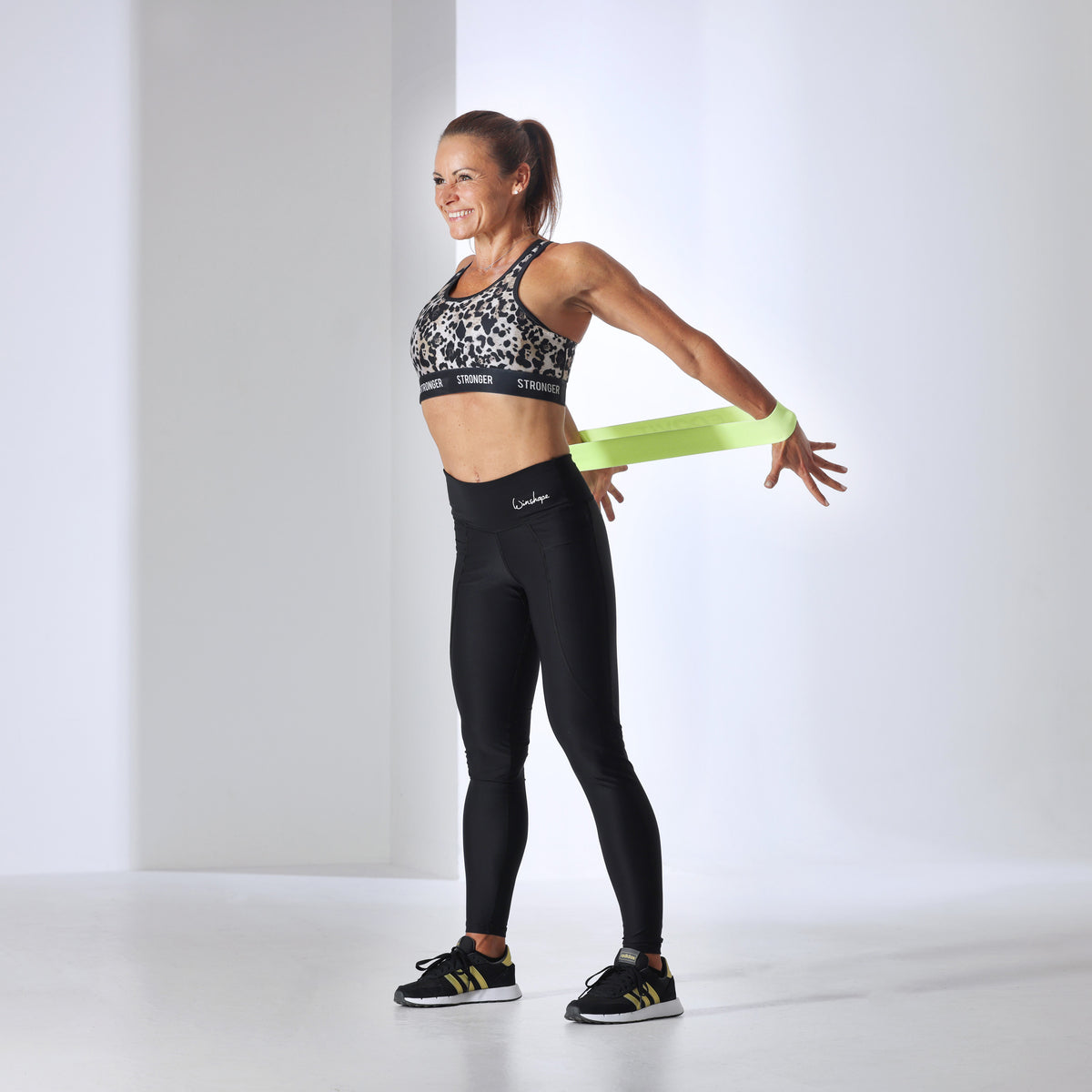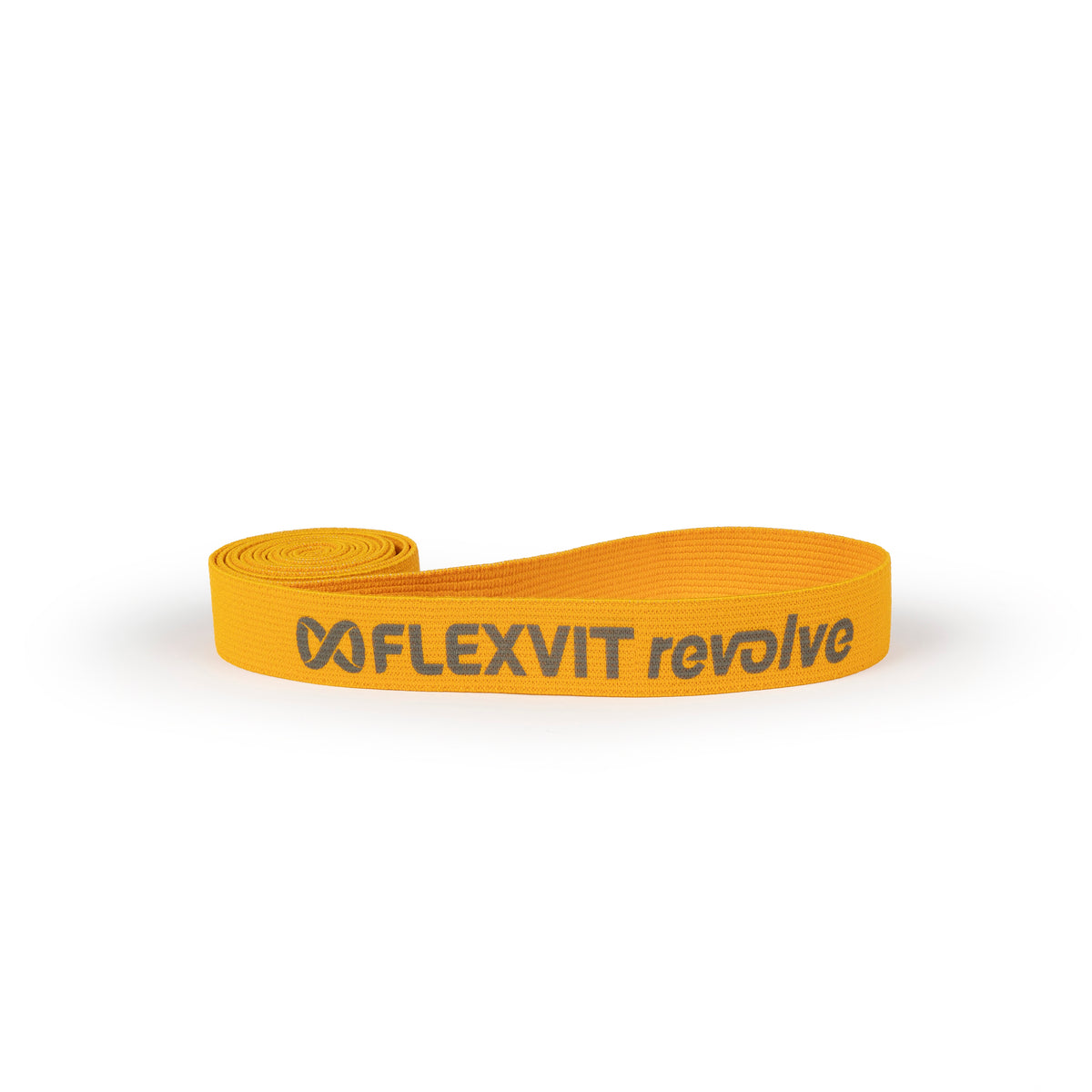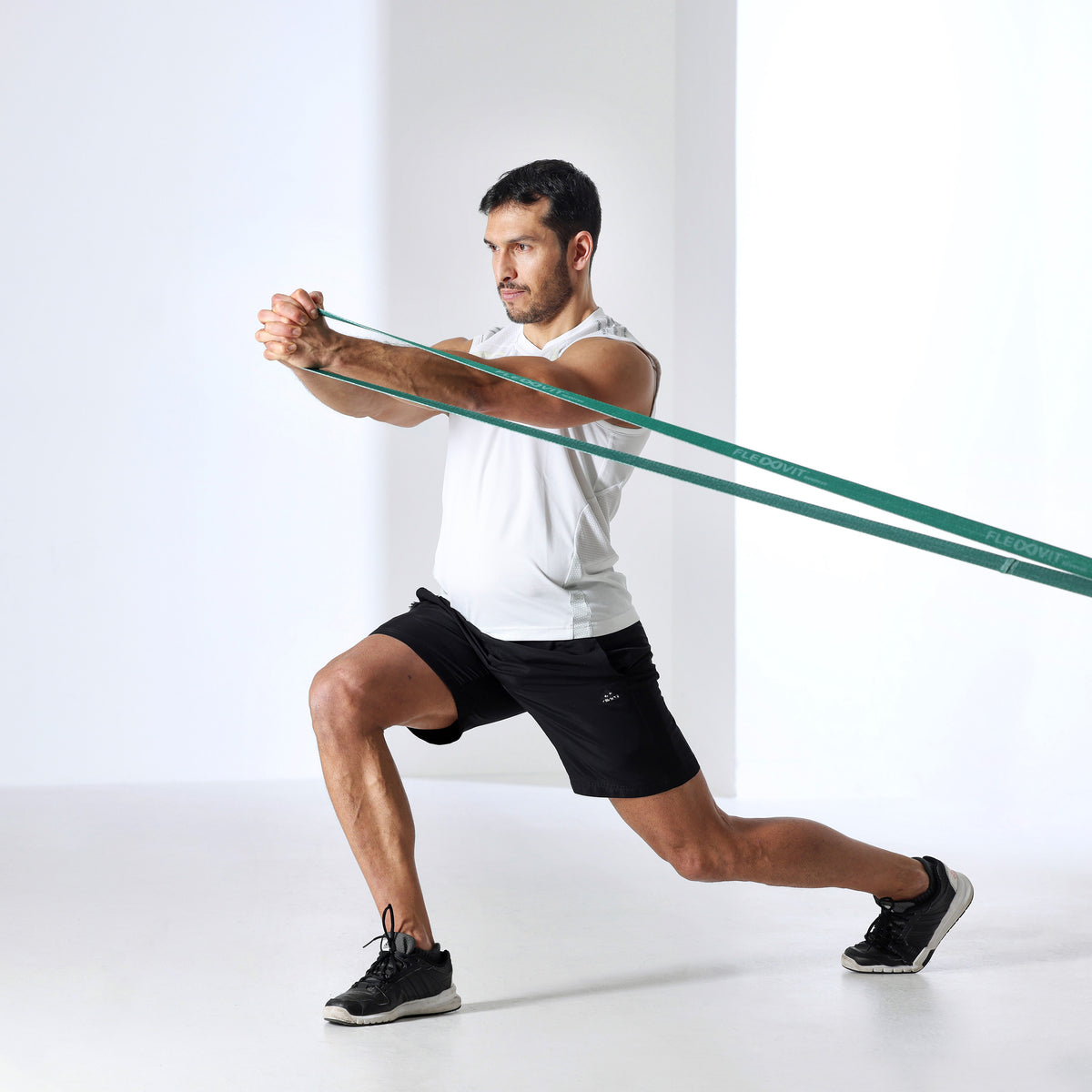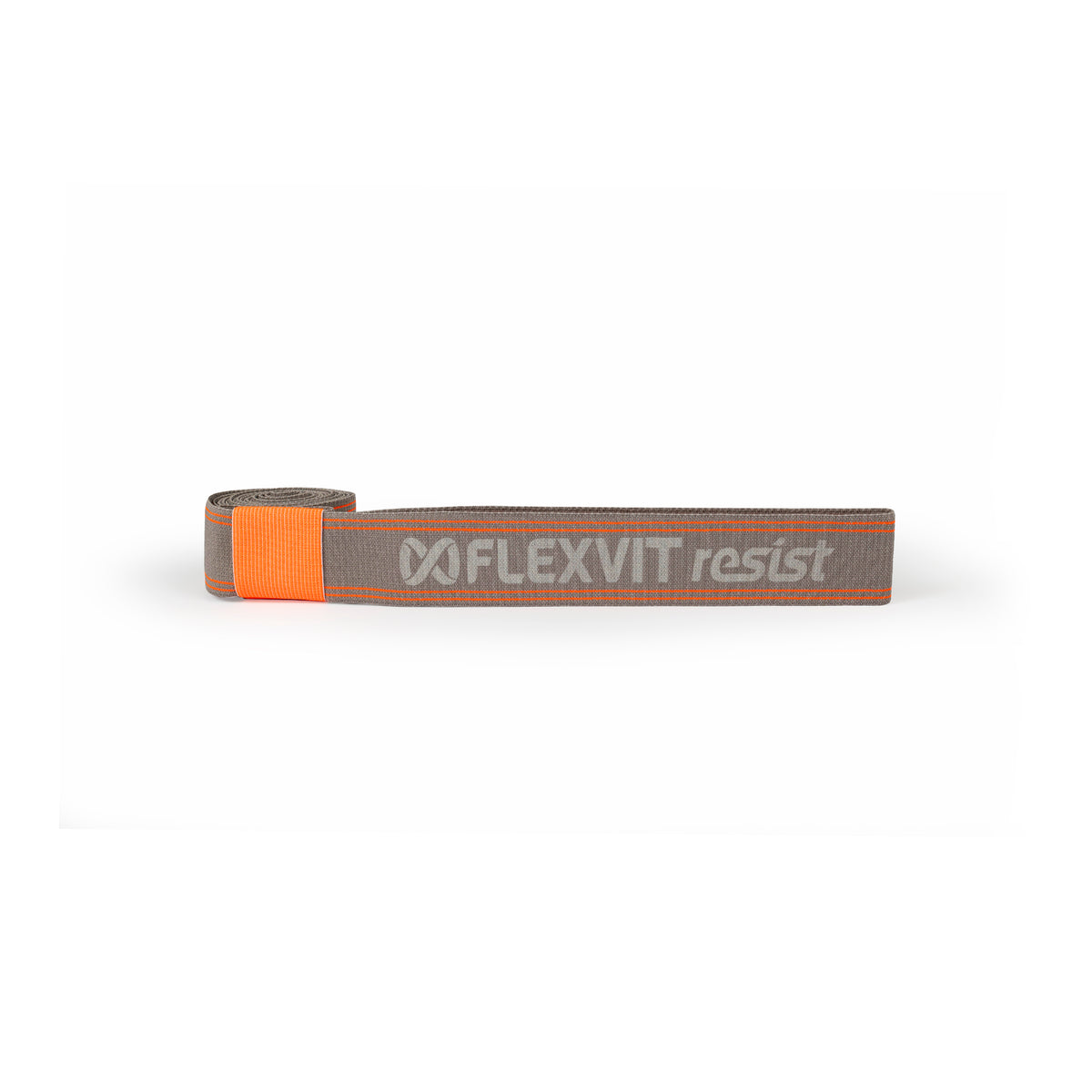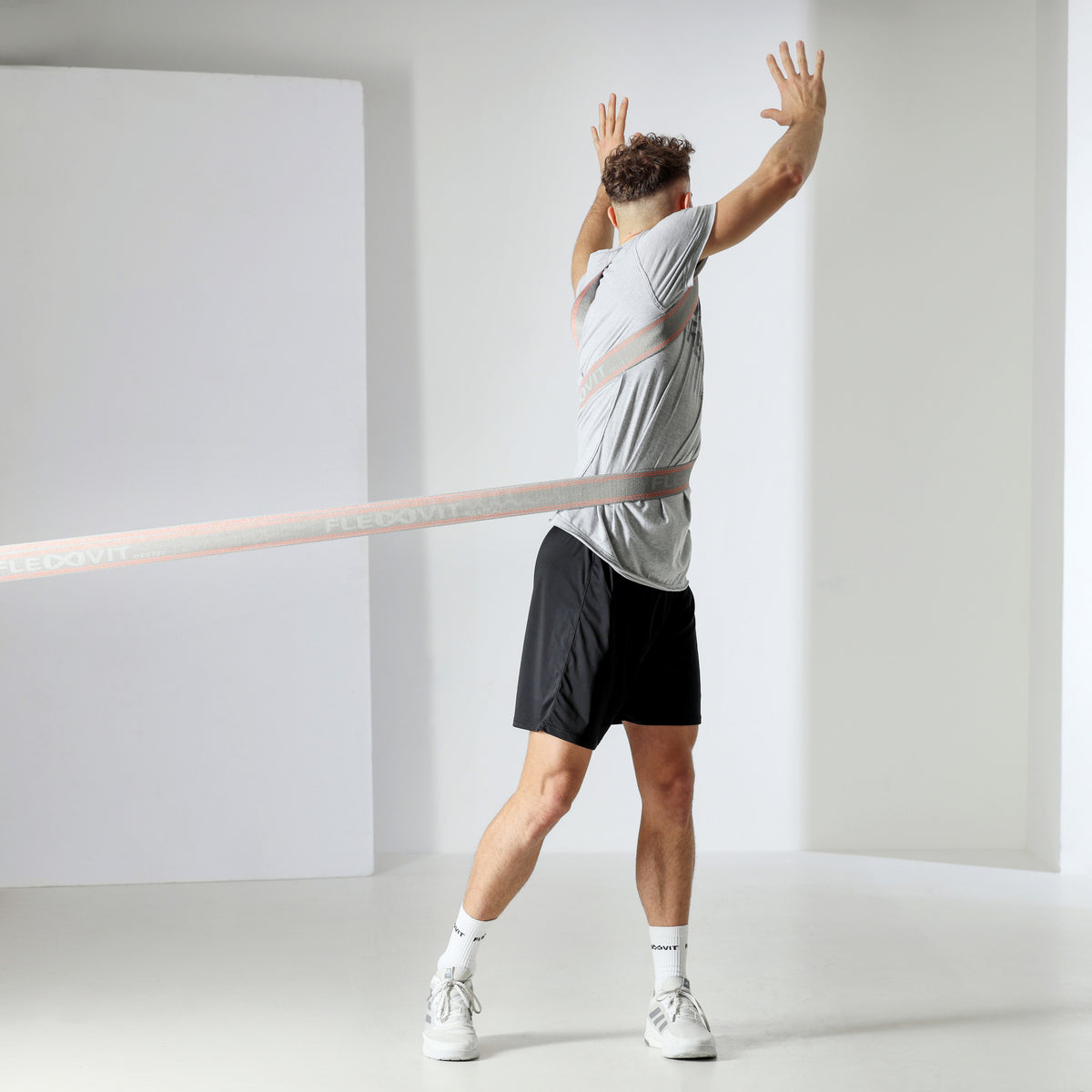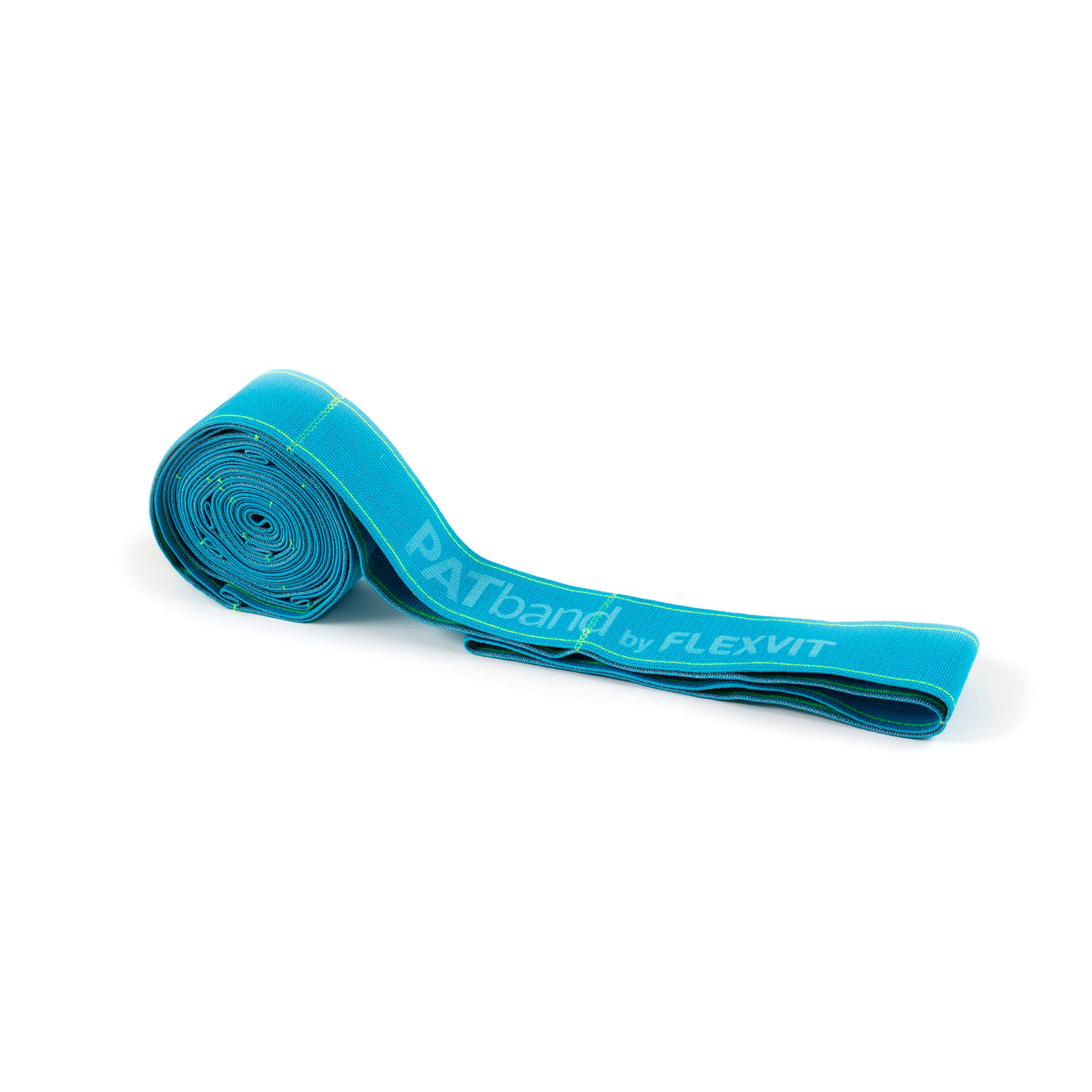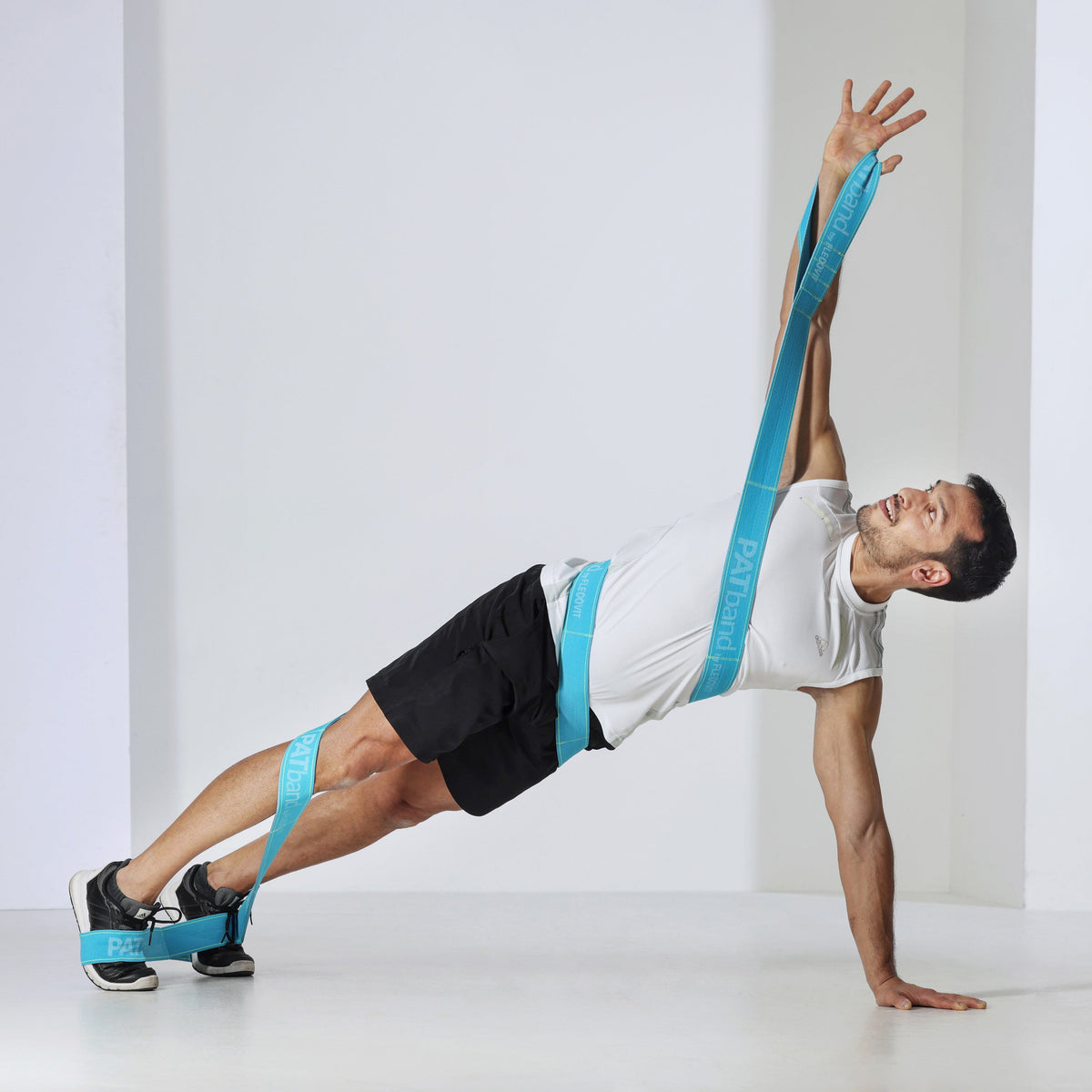We show you successful and effective beach volleyball training with our training and fitness bands. The best exercises for abdominal muscles, stability throughout the core & strong arms for targeted attack punches! Also check out the best leg exercises for more bounce in the sand!
Anyone who has ever jogged on the beach knows that it is a bit more difficult to move on this surface. For this reason, targeted leg exercises and training of the leg muscles are extremely important in beach volleyball. In this article you can read how you can get your legs fit to give you the decisive advantage in the game.
Leg exercises – This is what you should know about your muscles
Most of the muscles in the legs are considered long muscles because they are relatively “long” between the joints. When these muscles contract, i.e. contract and relax, they move the skeletal bones. Our entire musculoskeletal system in the body works according to this principle. The dynamic structures of our body, namely the muscles, move the solid components such as bones and joints by contracting. The smaller muscles often support the larger muscle groups. They also often ensure the stability of the joints and help them to be able to rotate. They are also active in fine motor skills and enable finely coordinated movements.

Training not just for the legs – myofascial chains and the leg muscles in beach volleyball
However, it is not just the muscles themselves that are responsible for the perfect interaction of the muscles. Since Tom Myers' book “Anatomy Trains”, myofascial chains – i.e. muscle-fascia chains – have been one of the most important references for the usefulness of functional training.
In functional training, it is recommended to think “in terms of muscle chains” when making movements, and therefore across several joints. This refers to the myofascial system, which consists of around 430 skeletal muscles that are surrounded by fascia and connected to each other by it. In his book, Tom Myers defines 11 myofascial “traction lines” through which even distant body parts are connected to one another using muscle loops and connective tissue.
For the leg muscles, this means that, for example, the calf muscles end just above the knee joint and the back of the thigh attaches above it. But there is a connection between them, through the fascia. That's why the elastic connective tissue plays such a big role in movements and should always be included, especially in dynamic sports that involve complex movement sequences. Nevertheless, a systematic look at the leg muscles naturally helps in choosing the right training or exercises. The largest muscles in our legs are in the thigh (quadriceps) and calf.
With our training bands you get all the options for effective beach volleyball training.
1. Knowledge of leg exercises: front of thigh
Our quadriceps is made up of four individual muscles. They are the strongest and leanest of all the muscles in our body and are located on the front of the thigh. These muscles are also called extensors because their main job is to extend the knee. Here's a quick digression into the individual muscles you should train if you want to strengthen your front thigh muscles:
Vastus lateralis:
This muscle is located on the outside of the thigh. It is the largest muscle of the four quadriceps muscles. The entire area between the top of the thigh and the kneecap, the patella, is occupied by the vastus lateralis.
Vastus medialis:
This muscle is shaped like a teardrop and is located on the inner thigh. It starts at the thigh bone and extends to the inner edge of the kneecap.
Vastus intermedius:
This muscle is located between the vastus medialis and the vastus lateralis, i.e. on the front of the thigh. It is considered the deepest quadriceps muscle.
Rectus femoris:
This muscle is located on the kneecap. Of the quadriceps muscles, it is the least involved in flexing the knee.

2. Knowledge of leg exercises: hamstrings
We all need to be able to straighten our knees in addition to walking. The opponents of these muscles are the flexors, or the flexor muscles. More specifically, we are talking about the hamstrings on the back of the thigh. These three muscles influence hip and knee movement. They start under the gluteus maximus, i.e. under your butt and behind the hip bone, and stop at the knee. Here we will briefly introduce these three muscles to you in more detail:
Biceps femoris:
This long muscle is primarily responsible for bending your knee. It starts in the upper part of the thigh and ends near the knee, at the head of the fibula.
Semimembranosus:
This is also a long muscle. It is located between the pelvis and shinbone. This muscle helps with both extension of the thigh and flexion of the knee. It is also particularly important for rotation of the shinbone.
Semitendinosus:
This muscle, like the semimembranosus, is involved in both the extension of the thigh and the flexion of the knee.

3. Knowledge of Leg Exercises: Calves
In addition to the knee, several other structures in the body are set in motion with the help of the calves. The calf muscles are primarily about mobility of the ankle, foot and toes. There is also more than just one muscle in the calf, which we will also briefly introduce to you. The most important muscles of the calf include:
Gastrocnemius (calf muscle):
This muscle is one of the large muscles of the leg. It starts at the heel and flexes and extends the foot, ankle and knee.
Soleus:
This muscle is particularly responsible for our walking and standing. It is located between the back of the knee and extends from there down to the heel.
Plantaris:
Fun fact: This rather small and thin muscle is missing in around 10 percent of people. In this case, its tasks are taken over by the gastrocnemius muscle, i.e. the large calf muscle.

Particular attention is also paid to the Achilles tendon. It is not for nothing that it has a particularly exciting and eponymous story in Greek mythology. It is probably the most important tendon in the calf for mobility. It can be found in the back of the calf and ankle, where it connects the plantaris, gastrocnemius and soleus muscles to the heel bone. It stores elastic energy that you need for running, jumping and many other movements.
Leg training – get strong in beach volleyball
There is a difference between being “fit” and being “in good beach volleyball shape.” Because beach volleyball is about a lot: whether it's speed, agility, strength or power, everything is required in this sport. At the same time, the sand as a surface makes it even more difficult to develop strength for sprints and jumps. There isn't a single beach volleyball player in the world who doesn't wish they could jump higher. And there probably isn't a beach volleyball player who curses the sand every now and then. It is therefore logical that - in addition to technique, of course - powerful and sport-specific trained leg muscles are the be-all and end-all in order to impress on the field.
Leg training in beach volleyball: Why resistance bands?
As already mentioned, strength, agility and speed are the skills that are essential for every volleyball player. Through functional band training and the appropriate tools, individual and team performance can be taken to a new level. Our high-quality FLEXVIT bands are ideal for making beach volleyball training effective and variable. And the best thing is that with our bands you are not tied to any gym. Simply train in your favorite environment – on the beach or in the beach hall. This enables sport-specific training directly on the target surface and in the target environment.

Leg training in beach volleyball: exercises
Here we have put together a few exercises that you can use to get your leg muscles glowing easily and anywhere:
Sprints with resistance: Train specific to the sport
For this exercise you use our longer training bands, namely the FLEXVIT Resist or FLEXVIT Revolve. Ideally, you train with a partner, but you can alternatively attach the resistance band to a fixed anchor using the FLEXVIT Multi-Anchor.
The special thing about this sprint training for beach volleyball players is that you can create horizontal resistance with our FLEXVIT bands. Compared to traditional weights, which depend on gravity and therefore only work on a vertical plane, resistance bands are therefore more sport-specific and functional. Put the band around your waist and get started.
Resisted Walks & Lateral Walks
To get into the starting position, place the FLEXVIT Mini directly above your knees and place your legs hip-width apart. Now get into an active position, i.e. a slight squat - this will further activate your legs.
Resisted Walks: With resisted walks you walk straight forward and back without turning around. The bands on your thighs provide additional resistance to your leg muscles. Pay particular attention to keeping your hips and core stable. Your knees should also not fall inward when you step forward or backward. In addition to your leg muscles, this exercise also trains your lower back and buttocks.
Lateral Walks: You start in the same starting position. Instead of walking straight forward or backward, start by taking steps to the side. Make sure that it is not the stepping leg that is pulling, but rather that you are pushing off with the leg that remains standing. Take about 10 steps in one direction and then back. Here too, you should proceed in a controlled and conscious manner. Rather than compromising your posture, take your steps more slowly. Your inner and outer thigh muscles in particular work here.
Stay low throughout the movement. Orient your stride length to your hip to shoulder width. Don't tense up, just try to breathe calmly and evenly. With the FLEXVIT Mini you can also vary a lot: you can choose different resistances and adapt them to your level of performance depending on the exercise. Also try to place the bands just above the ankle instead of on the thigh. You can also use multiple bands at the same time to get the maximum effort from these exercises.
Fire hydrant
This exercise may seem a little funny, but you won't find it funny as you do it. Based on the image of a dog peeing on a fire hydrant, the Fire Hydrant exercise is a real challenge for your thighs as well as your lower back and buttocks.
Place your FLEXVIT Mini around the middle of your thigh. Then get on all fours, i.e. on your hands and knees, with your back straight and your head bowed. Pay particular attention to ensuring that your back remains active and straight - you should neither hunch over nor slump your back. Now slowly lift one leg up like a peeing dog. Hold here briefly and then slowly return your leg to the starting position.
To improve this exercise, you can also lift your leg straight out rather than bent. During the exercise, make sure that your hips remain as straight as possible and that you do not move to one side. This means that in addition to your legs, your core and torso are also required to maintain your balance.
Squat jumps
You can use this exercise alone or as a partner exercise. In both cases, you should know the basic exercise of the squat or squat. To warm up, you can do a few repetitions of this basic exercise before adding jumps to make it more difficult.
Squat Jumps: Place the FLEXVIT Mini around your thighs and place it just above your knee. Now get into a shoulder-width stance. Keep your torso and core active throughout the entire exercise. Be careful not to allow your knees to fall inward when you land or when you jump off. In this version of the squat jump, you start in a half squat. Then go deeper to gain momentum and then jump as high as you can. Land back in a half squat, not with your legs straight. This keeps your leg muscles active throughout. Take the time to stand still after landing. If possible, try to stand without your knees wobbling; ideally, you should land so firmly that your legs barely move as soon as they touch the ground. Repeat the whole thing 10 to 12 times.
Squat jumps with a partner: For this training variant you use the FLEXVIT Resist. Similar to resisted sprints, place it around your waist while your partner holds the other end. Now you go into a half squat. To become active, you now go deep and jump forward powerfully. Make sure your hips are fully extended. Here, too, when landing, you should make sure to stand as stable as possible and arrive directly in a slight knee bend. You can do these jumps over a defined route or 10 times in a row. If you're looking for the ultimate challenge, you can also put a FLEXVIT Mini around your thighs in addition to the FLEXVIT Resist.
Off to the sand – with FLEXVIT!
Using resistance bands for beach volleyball training is one of the best ways to set yourself apart from opponents and other teams. Give yourself an advantage with strong legs that goes beyond high jumps and fast sprints.
Use these handy and effective tools to increase your explosiveness in movement. Increase your mobility, improve your sense of balance, build strength and stability.
A special advantage of our bands: Regular training with resistance bands can reduce the risk of injury. Whether FLEXVIT Mini, Resist or Multi – with all of our bands you can easily and effortlessly make a huge difference in your performance – so grab your bands and get on the sand!
Get the FLEXVIT app for your functional band training now! Create your own workouts and prepare yourself perfectly for your next movement tasks!

